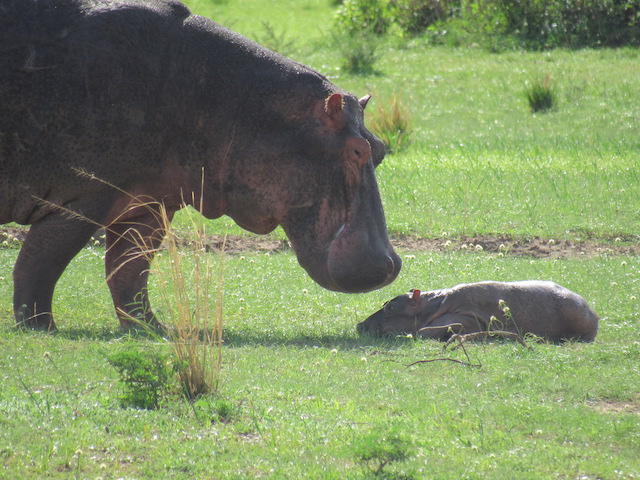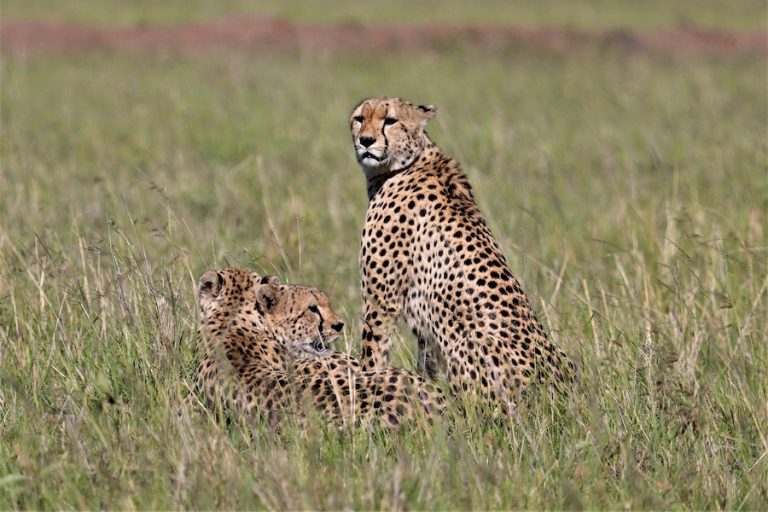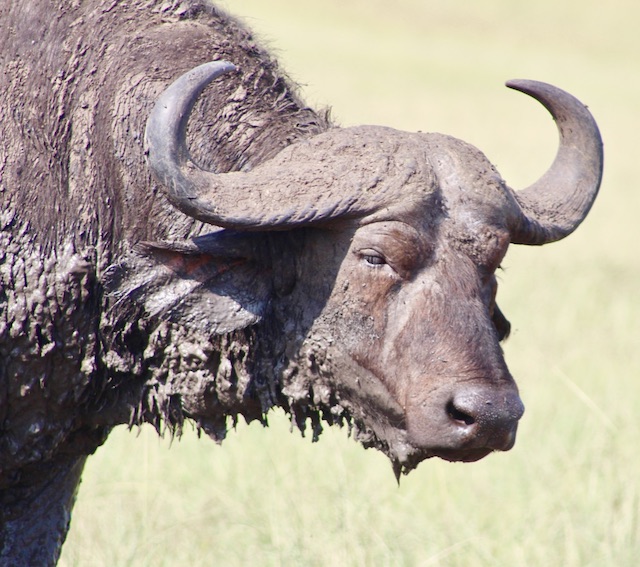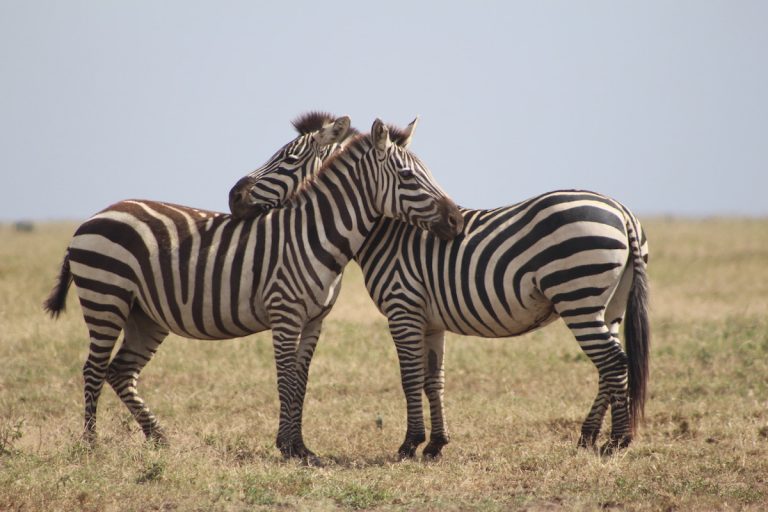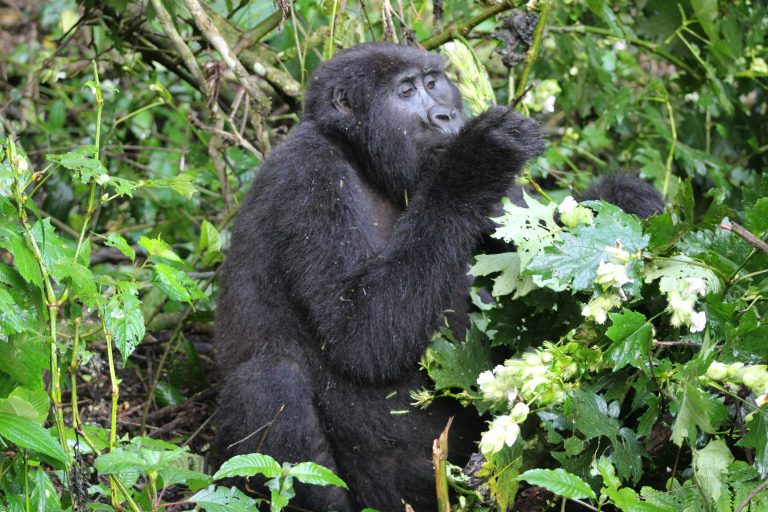Amboseli National Park is one of Kenya’s popular National Parks with views of Africa’s highest mountain – Kilimanjaro. The enchanted land of elephants is located on the border of Kenya and Tanzania, in the north-western direction of Tanzania’s Mount Kilimanjaro. Popularly known for its large elephant herd sightings, Amboseli is dominated by acacia woodland, rocky thorny bush, swampy marshes, and lakes. The park is 392 square kilometres in size and is part of the considerably bigger 3,000 square kilometre Amboseli environment.
Amboseli gets its name from a Maasai phrase that means “salty dust,” which is portrayed by the contrast between the arid sections of the dried lake bed and the oasis of the marshes. Amboseli National Park is well-known for being the best spot in the world to get up and personal with free-roaming elephants. With a record of over 1600 elephants that inhabit its ecosystem, Amboseli, has the world’s largest and longest studied Elephant population. This has made the Park one of Kenya’s most popular gaming viewing sites.
Amboseli National Park also features other wildlife including Cape buffaloes, impalas, lions, cheetahs, spotted hyenas, Masai giraffes, Grant’s zebras, and wildebeest, among others. A variety of both large and small bird species are found here. Moreover, Amboseli was initially designated as the Maasai Southern Reserve before it was gazetted into a park. A wildlife safari to this Kenyan destination can also include the opportunity to meet the Maasai in a Maasai village: one of the most captivating African tribes to know. Despite its small size, Amboseli is Kenya’s second most popular tourist destination, trailing only the famous Masai Mara national reserve.
Wildlife in Amboseli National Park
Animals in Amboseli National Park
Amboseli National Park is a popular safari destination for wildlife enthusiasts. The park is well known for being home to Kenya’s greatest population of elephants, hence known as the “Home of Elephants.” Wildlife in Amboseli National Park is concentrated in five distinct habitats: the dried-up bed of Lake Amboseli, Sulphur spring wetlands, savannah vegetation cover, open plains, and woodlands. Wildlife in the park includes giraffe, spotted hyena, zebra, buffalo, blue wildebeest, cheetah, elephant, giraffe, hippopotamus, Thomson’s gazelle, lion, cape buffalo, and Impala.
Amboseli’s diverse wildlife species provide wonderful game viewing, and the best time to enjoy the game drive and spot animals are during the dry season, which occurs from June to October. Visiting the park during the dry season for animal viewing makes for excellent photography opportunities; especially when large herds of animals cross the sandy plains, kicking up a lot of dust. Furthermore, animals gather around the remaining waterholes during the dry season, hence immense sights. The observation hill and sinet delta provide excellent views of the park’s animals.
Birds in Amboseli National Park
Home to about 425 bird species; including common, rare, endemic, and migratory bird species that visit the park annually, birding tours in Amboseli can never disappoint. The Park’s extensive forest cover provides a habitat for a variety of bird species; water birds, for example, will most commonly be seen around water catchment regions such as swamps. Expect to find a variety of water species including the kingfisher, pelicans, herons, egrets, among others. There are also numerous bustards, and starlings, to mention but a few in the Park’s grasslands.
With such incredible avian diversity, Amboseli National Park is one of Kenya’s Important Birding Areas (IBA). The park’s main bird is Kenya’s national bird, the “Lilac Breasted Roller.” Other bird species include the Marabou stork, the secretary bird, the Madagascar pond, Fischer’s sparrow lark, the Lesser kestrel, the Grey-crowned crane, the Rufous-napped lark, and the Common Ostrich. More species in Amboseli include the Fulvous Whistling Duck, Egyptian Goose, Pied Kingfisher, Steel-blue Whydah, African Pygmy-Goose, Red-billed Duck, Falcon, Helmeted Guinea bird, African Black Duck, Somali Bunting, Double-banded Courser, etc.
Lakes
Amboseli National Park contains a chain of seasonal lakes located in the park’s western portion and these lakes contribute to its breath-taking scenery. The lakes occupy the territory of the drained basin of an ancient Pleistocene Lake and are normally replenished during the rainy season. These lakes include; Lake Amboseli, Lake Kioko, Lake Simek and Lake Conch.
The margins of these lakes have swamps with dense papyrus that harbour a lot of aquatic bird species, making them hotspots for bird-watching excursions in Amboseli National Park. Lakes in Amboseli National Park are not just the ideal spots for bird watching but also wildlife viewing, as animals frequent the lakes to drink water.
The Observation Hill
The observation hill is a popular attraction that one should not miss out on while on a Kenya safari to Amboseli National Park. The pyramid-shaped hill is located in the western section of Amboseli national park: previously, this hill was occupied by Ndorobo, a group of hunter – gatherers, and some of their remains may still be seen today. On the other hand, the observation hill is thought to have originated during the creation of Mount Kilimanjaro as a result of a Pleistocene activity.
The observation hill in Amboseli National Park is the only place where tourists on a Kenya game viewing safari are allowed to get out of their safari vehicles and take a walk. The hill features a staircase curved from volcanic rocks that tourists use to reach its summit, which is known as the observation point. From the hill’s vantage point, you can see Amboseli’s swamps, marshes, savannah grasslands, and a variety of animals.
The Maasai
Amboseli National Park is surrounded by the local Maasai people community, one of the most authentic African cultures to visit. The interesting Masai people dominate the outskirts of Amboseli National Park and a cultural visit to the Masai village is an inevitable experience that offers a look into true African culture.
In the Masai village, you can experience Maasai cultural customs such as Maasai dances, traditional singing, and their unique method of dressing that is comparable to the Karamojong of Uganda. You will also explore their local homesteads known as Manyattas and see how they live as well as local culinary items and Masai antiques. Moreover, you can even engage in re-afforestation by participating in planting seeds with them – as a way of contributing to their colourful community. There is an annual 7-day Maasai festival in Loitoktok that showcases the Maasai culture, traditions, and traditional practices, as well as the Masai yearly Olympics in Kimana.
Elephant Research Camp
The elephant research camp in Amboseli National Park focuses on research on the elephants in the park, and elephants in Amboseli are listed among the most studied elephants in the world. The elephant research camp is spearheaded by Dr. Cynthia Moss, whose work is portrayed in books such as The Amboseli Elephants and Elephant Memories. Dr. Cynthia Moss is also the creator of the well-known documentary DVD titled The Echo of the Elephants.
The study camp is located in the heart of Amboseli National Park and is run by the Amboseli Trust for Elephants. This camp is not open to casual visitors on safari. However, the camp is visited during a one-hour presentation in which researchers describe their work and other elephant conservation challenges.
Tanzania’s Mount Kilimanjaro
Amboseli National Park is graced with the magnificent backdrop of Tanzania’s Mount Kilimanjaro’s snow-capped peak. Mount Kilimanjaro is Africa’s largest freestanding mountain, reaching 5,895 meters above sea level. The snow-capped peak of Mount Kilimanjaro dominates the scene and is visible from Amboseli National Park. The snow-capped summit creates a stunning picturesque view suitable for photography as viewed from Amboseli National Park.
Safari Activities in Amboseli National Park
Game Viewing in Amboseli National park
The most breath-taking experience on an African safari in Amboseli National Park is game viewing. Game viewing in Amboseli National Park may be experienced using the off-road safari vehicle with in the savannah area. Amboseli National Park is a haven for wild animals, particularly large elephant herds, which live in broad plains, acacia forests, rocky thorn bushes, and marsh terrain.
Game drives are available all day, however, the best time to watch wild animals is early in the morning, from 6:30 am to 11:30 am, and in the evening, from 3 pm to 6:30 pm. During the day, you can see a high concentration of animals quenching their thirst on water banks. Furthermore, early in the morning is when wildlife is often active. Other animals to see in Amboseli National Park include spotted hyenas, which can be seen early in the morning returning to their hideouts, bush babies, and serval cats, among other predators which can be easily seen on a night game drive. On the other hand, more species such as waterbucks, buffalos, baboons, aardwolf, leopards, jackals, lions, Thomson’s and Grants gazelles, hippopotami, zebras, elephants, and other animals can be seen on day game drives in Amboseli National Park.
Bird-watching in Amboseli National Park
Amboseli National Park is perfect for birding and boasts a rich bird life of over 425 bird species, which may be seen in marsh areas, grasslands, and acacia forests. Whereas its marshes thrive with water species such as egrets, herons, pelicans, and crowned cranes, among others, the park’s grassland sections are home to numerous interesting ground birds, including Hartlaub’s bustard and the locally endemic Pangani longclaw. Additionally, some dry country rarities can be found in the acacia woodland, such as the steel-blue whydah, white-bellied go-away bird, and Von der Decken’s hornbill.
Birding in Amboseli National Park is good from May to June and October to December. During the wet season (March to May & September to November), large numbers of flamingos as well as migratory birds may be present. While preparing a birding tour to Amboseli National Park, remember to carry a good camera and binoculars for clear viewing of bird species across long distances.
Guided Nature Walks in Amboseli National Park
Amboseli National Park is endowed with gorgeous foliage, marshes, and mammal species, all of which can be seen on a guided nature walk. Guided Nature walks in Amboseli National Park also include visiting the observation hill which offers spectacular sightings across the sweeping savannah of the Park.
The guided nature walk in Amboseli is the best way to discover the park’s hidden treasures because it is done on foot and allows you to get up close and personal with wild animals such as herds of elephants, zebras, giraffes, impalas, and buffaloes among others while listening to the sweet melodies of birds singing.
Cultural Tours in Amboseli National Park
Home to the remarkable Maasai people, Amboseli offers captivating cultural tours. The Maasai people are the land’s ancient tribe, and they own most of the land in this region. Cultural tours in Amboseli offer travellers a fantastic opportunity to meet the locals and learn about their culture, food, history, and a variety of other topics.
The park is surrounded by the local “Maasai people,” and you can visit them in the afternoon during your visit to Amboseli National Park. Expect to learn about their unique way of life, such as their exhilarating traditional dances as they jump up and down, as well as visit their homesteads (Manyattas) to explore how they live as a community.
Hot Air Balloon Excursions in Amboseli National Park
This gratifying activity that is done very early in the morning for a terrific rewardable aerial viewing of Amboselli’s landscape and wildlife: as well as the distinguished Mount Kilimanjaro. Lifting off as early as 6 a.m., the hot air balloon drifts silently over the savannah grasslands below, where you may see a variety of wildlife.
The hour-long flight is complimented with a “Champagne Bush Breakfast” at the balloon landing in the bush. The balloon is flown by a highly qualified and experienced Pilot and the basket sizes vary. You have to book ahead of time because space is normally limited to a maximum of 16 passengers per balloon, and frequently less if flying with a smaller basket.
Best time to Visit Amboseli National Park
Amboseli National Park can be visited at any time of year. However, visiting the park during the dry months of January to February and June to October is recommended. Amboseli National Park is best visited during the dry season because most animals congregate around water sources during this time; allowing you to encounter them in huge numbers. And while visiting Park, morning and dusk are the finest times for game viewing.
Nonetheless, Amboseli National Park can also be visited during the rainy season and there are several advantages to visiting the park during this time of the season. The rainy season is usually between March to May and June to September and April. In the rainy season, the rains will have altered the landscape, making it appear greener at this point, hence attractive scenery. Wildlife is also evident, as you may come across new-borns. Furthermore, the rain brings migratory bird species to breed, providing birdwatchers with an unforgettable experience.
However, during the wet season the roads in the park can be difficult to access.
How to Get to Amboseli National Park
Amboseli National Park attracts travellers from all over the world and is easily accessible by plane or car. The majority of visitors to the park are international visitors who arrive in Kenya at Jomo Kenyatta Airport, Kilimanjaro Airport, or Wilson Airport and are picked up by tour operators or private automobiles and then driven to the park. There are also daily regular flights from Nairobi-Kilimanjaro Airport and Wilson Airport to Amboseli airstrip, which may be arranged with the assistance of a travel operator.
By Road
Two routes can be used by travellers to get to Amboseli National Park by car, which can take up to three hours. To travel from Nairobi to Meshanani gate, take the Namanga route for 240 kilometers which is a 3-hour drive. On the other hand, it takes 228 kilometers and roughly two and a half hours to reach Remito Gate through Mombasa Road. If you take the Mombasa Road, you will pass through Emali, a little town that is exceedingly attractive and smooth. When traveling by road, passengers are advised to always use a 4WD vehicle for a more comfortable journey.
By Air
Domestic flights to Amboseli National Park are known as chartered or scheduled flights. These flights depart from Nairobi Wilson Airport and Moi Airport Mombasa and fly you to one of Amboseli airstrips and take only 30 minutes to land.
Where to stay in Amboseli National Park
During your safari to Amboseli National Park, you can stay in amazing comfortable lodges ranging from mid-range to luxury. Accommodation in Amboseli includes;
- Amboseli Sopa Lodge
- Amboseli Kiwana Lodge
- Elewana Tortilis Camp
- Amboseli Oltukkai Lodge
- Kilima Safari Camp
- Amboseli Serena Safari Lodge
- Elerai camp
- AA Lodge Amboseli
- Tawi Lodge

